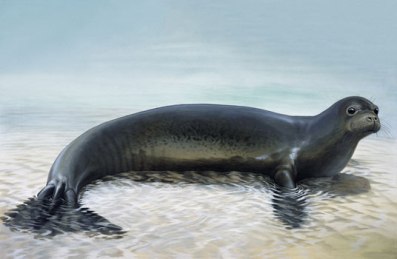 Its time to look backwards at the animals of the past that couldn’t quite survive into our present. This week we will be looking into the Caribbean Monk Seal (Neomonachus tropcicalis) and what ultimately led to its extinction.
Its time to look backwards at the animals of the past that couldn’t quite survive into our present. This week we will be looking into the Caribbean Monk Seal (Neomonachus tropcicalis) and what ultimately led to its extinction.
The Caribbean Monk Seal went extinct in 1952 with the last confirmed sighting off Serranilla Bank. These seals used to inhabit the Caribbean Sea and they were the first type of seal to go extinct from human causes.
HABITAT & DIET
 They could be found in the water around rocky or sandy coastline and islands which they used for resting and breeding. Their diet is unknown but was believed to be eels, lobsters, octopus and reef fish.
They could be found in the water around rocky or sandy coastline and islands which they used for resting and breeding. Their diet is unknown but was believed to be eels, lobsters, octopus and reef fish.
MAJOR THREATS

The only known predators of the Caribbean Monk Seal were sharks and humans. They were hunted for their skins and oil and were also put in danger due to the fishing industry. It was ultimately the tough pressures from humans that led to their extinction.
Click here for more Animals We’ll Never See Again
Sources:
Images courtesy of:

 Great Auks were hunted for their feathers, meat, fat and oil. As the birds became more scarce, early conservations believed that the collecting of specimens was necessary to help save the species. Unfortunately, this specimen collecting was what lead to the ultimate demise of the Great Auk.
Great Auks were hunted for their feathers, meat, fat and oil. As the birds became more scarce, early conservations believed that the collecting of specimens was necessary to help save the species. Unfortunately, this specimen collecting was what lead to the ultimate demise of the Great Auk. This installment of Lost Forever is looking at the decline of the Passenger Pigeon (Ectopistes migratorious). What’s unique about the downfall of this species is that the Passenger Pigeon was once one of the world’s most
This installment of Lost Forever is looking at the decline of the Passenger Pigeon (Ectopistes migratorious). What’s unique about the downfall of this species is that the Passenger Pigeon was once one of the world’s most 
